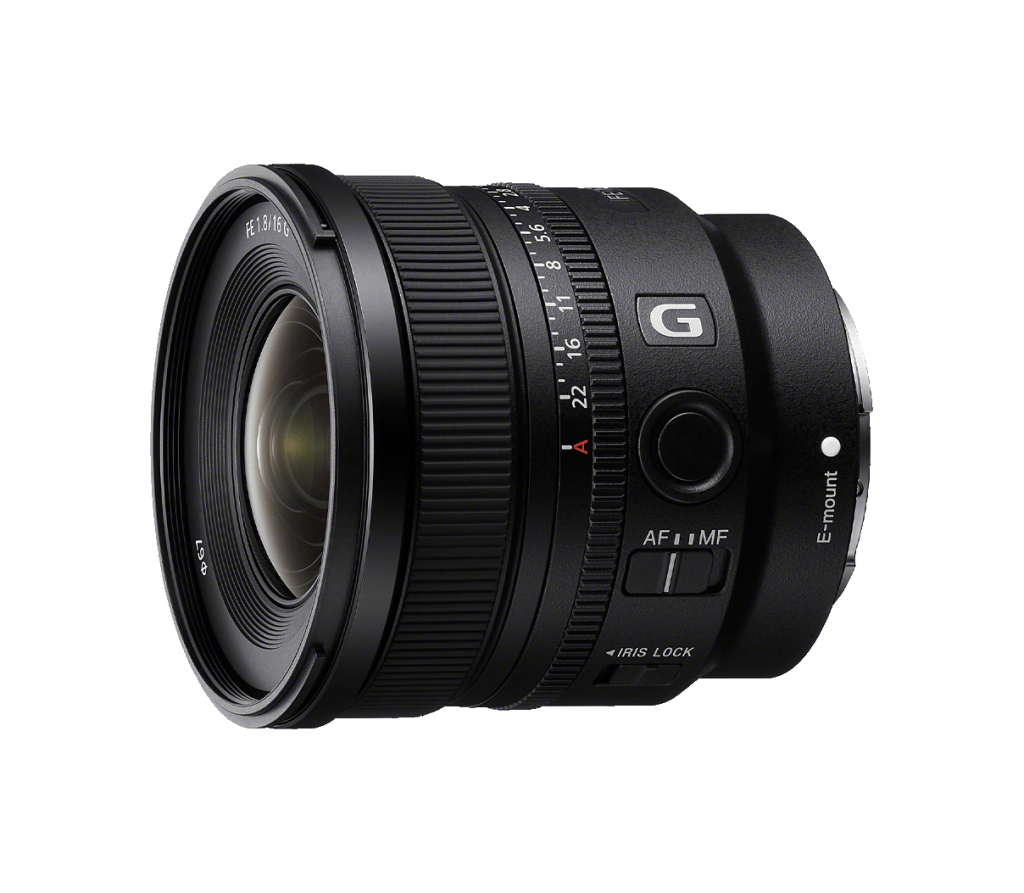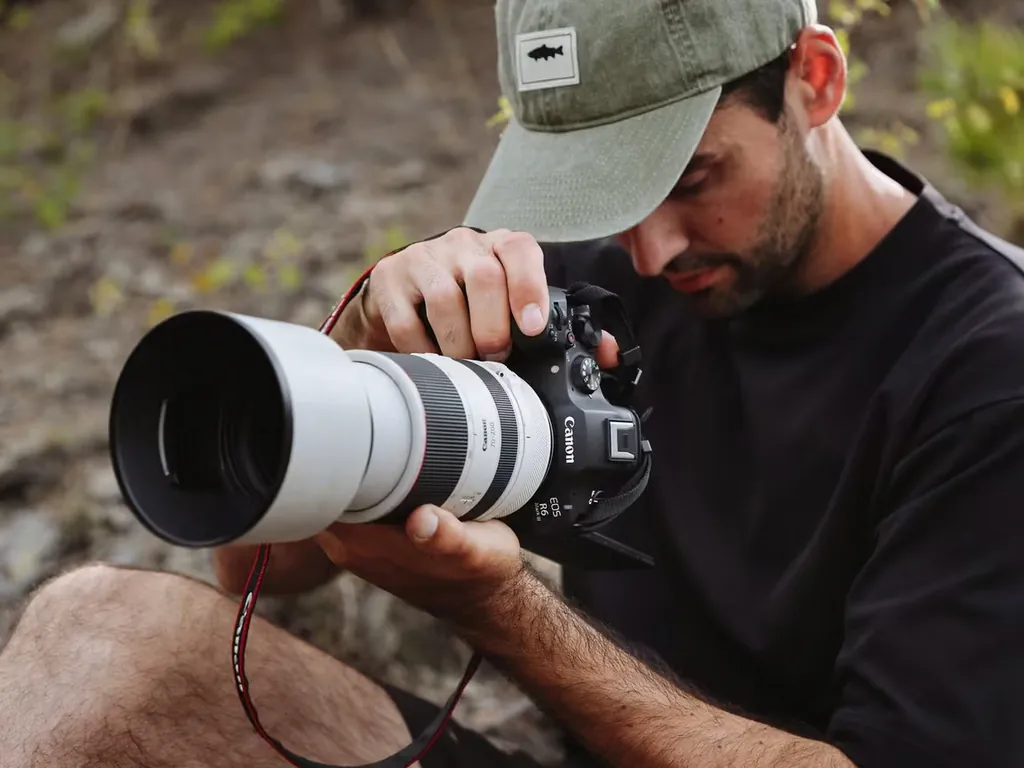When Sony announced their new FE 16mm F1.8 G, many photographers and videographers immediately took notice. Slotting neatly between the more expensive 14mm F1.8 GM and the popular 20mm F1.8 G, this new lens promises to hit a sweet spot for ultra-wide shooting. After three weeks of extensive testing across various shooting scenarios, I’m ready to share whether this compact marvel delivers on its considerable promise.

Design and Build Quality
The first thing that strikes you about the 16mm F1.8 G is its remarkably compact size and lightweight build. At just 304g (10.8 oz) and measuring only 75mm in length, this lens defies expectations for a full-frame ultra-wide with such a bright aperture. For comparison, it’s noticeably smaller and lighter than Sony’s 14mm F1.8 GM, which weighs 460g.
Despite its diminutive size, the build quality feels solid and professional. The lens features Sony’s dust and moisture-resistant design with appropriate sealing at critical points, including a gasket at the mount and a fluorine coating on the front element to repel water and oil.
The control layout follows Sony’s now-standard G series design, which I’ve grown to appreciate for its logical arrangement and tactile feel. Moving from the mount forward, you’ll find:
- A customizable focus hold button
- AF/MF switch for quick focusing mode changes
- Iris lock switch to prevent accidental aperture changes
- Aperture click on/off switch (on the opposite side)
- Aperture ring with clearly marked third-stop increments from F1.8 to F22
- Manual focus ring with smooth, precise action
The aperture ring can be de-clicked for smooth, silent aperture transitions during video—a feature videographers will appreciate. The manual focus ring turns with excellent precision and a pleasing resistance, making fine manual focus adjustments intuitive and accurate.
Handling and Ergonomics
Despite its compact dimensions, the lens handles beautifully on both larger bodies like the A7R series and smaller cameras like the A7C. The weight distribution is well-balanced, creating a comfortable shooting experience even during extended sessions.
What’s particularly impressive is how this lens transforms a Sony body into a highly portable ultra-wide system that doesn’t sacrifice image quality. For landscape photographers who trek long distances, the 304g weight makes a noticeable difference in your bag over the course of a day.
For videographers, this lens is a dream on gimbals. The lightweight design puts far less strain on motors, extending battery life and improving overall stability. Combined with the 16mm focal length, which provides enough width to accommodate Active SteadyShot’s crop factor, it becomes an ideal choice for handheld vlogging and run-and-gun documentary work.

Optical Performance
Sharpness and Resolution
At F1.8, the center sharpness is immediately impressive, showing excellent resolution and contrast straight out of the gate. The corners do show some softening at maximum aperture, but it’s surprisingly minimal for an ultra-wide lens. By F2.8, the corners sharpen up considerably, and at F5.6-F8, the lens delivers remarkable edge-to-edge sharpness that will satisfy even the most demanding landscape photographers.
For astrophotographers, the performance at F1.8 is noteworthy. Stars remain as well-defined points of light even in far corners, with minimal coma distortion (the smearing of bright points). This is a critical performance metric for night sky photography, and the 16mm F1.8 G passes with flying colors.
Chromatic Aberration and Flare Resistance
The combination of one Super ED and three ED glass elements effectively suppresses chromatic aberration throughout the frame. Even in high-contrast scenarios like tree branches against bright sky, color fringing is minimal and easily corrected in post.
Flare resistance is excellent for an ultra-wide lens. When shooting directly into strong light sources, the lens maintains impressive contrast with only moderate veiling flare and well-controlled ghosting artifacts. This makes it particularly suitable for backlit architectural photography and sunrise/sunset landscapes.
Distortion and Vignetting
Like most modern ultra-wide lenses, the 16mm F1.8 G relies on digital correction profiles to manage distortion and vignetting. With corrections applied (automatic for JPEGs), distortion is well controlled for a 16mm lens.
The uncorrected RAW files do show significant barrel distortion and vignetting at wider apertures, something to be aware of if you prefer to handle corrections manually. However, most photographers will likely use the lens profiles, which are seamlessly integrated into all major editing software.
Bokeh and Depth of Field
While ultra-wide lenses aren’t typically associated with shallow depth of field, the F1.8 aperture combined with the close focusing capability offers surprising opportunities for subject isolation. The 11-blade circular aperture produces smooth, pleasing bokeh that’s remarkably well-behaved for a wide-angle lens.
When shooting close to your subject at F1.8, you can achieve a noticeable separation effect that’s quite unique for a 16mm lens. Background highlights render as soft circular discs, with minimal outlining or onion-ring textures. There is some cat’s-eye shape deformation towards the corners, but this improves when stopping down to F2.8.

Autofocus Performance
The dual XD linear motor system delivers fast, precise, and virtually silent autofocus. On the Sony A7IV and A1 bodies I tested with, focus acquisition was nearly instantaneous in good light, and tracking remained consistent even with fast-moving subjects.
What’s particularly impressive is the focus consistency at close distances. The lens can focus down to just 15cm (5.9″) in AF mode and even closer at 13cm (5.1″) in manual focus, achieving a maximum magnification of 0.25x (AF) or 0.30x (MF). This close-focus capability opens up creative wide-angle macro opportunities that few ultra-wide lenses can match.
Focus breathing (the change in angle of view when focusing) is present but well-controlled. For videographers, the lens also supports Sony’s breathing compensation function on compatible bodies, which further minimizes this effect at the cost of a slight crop.

Video Performance
This lens seems particularly optimized for video applications, addressing several pain points that have plagued ultra-wide options in the past:
- Filter Compatibility: Unlike the 14mm F1.8 GM with its bulbous front element, the 16mm takes standard 67mm filters—a massive advantage for videographers who rely on ND filters for proper exposure and motion blur control.
- Size and Weight: At just 304g, it’s perfectly balanced on gimbals and doesn’t fatigue you during extended handheld shooting.
- Focus Performance: The silent AF operation and minimal focus breathing make it ideal for professional video production.
- Aperture Control: The de-clickable aperture ring allows for smooth exposure transitions during recording.
When paired with Sony’s in-body Active SteadyShot stabilization, the lens provides remarkably stable footage even when walking. The 16mm focal length gives just enough room to accommodate the Active Mode crop while still maintaining a comfortably wide field of view—something the 20mm F1.8 G struggles with, as it becomes noticeably tight with Active stabilization enabled.

Real-World Applications
Landscape Photography
For landscape photography, the 16mm F1.8 G hits a sweet spot. It’s wide enough to capture expansive scenes with dramatic foreground elements, yet not so extreme that composition becomes challenging. The F1.8 aperture proves useful for night landscapes and astrophotography, while the corner-to-corner sharpness at F8-F11 delivers the depth of field and detail that landscape photographers demand.
The lens produces well-defined sunstars when stopped down to F16-F22, with 22 points created by the 11-blade aperture. These are clean and precise, adding a creative element to sunrise and sunset landscapes.
Architectural Photography
The lens excels at architectural photography, both interiors and exteriors. The 107° angle of view captures tight interior spaces effectively, while the minimal distortion (with corrections) preserves straight lines accurately enough for professional work.
For exterior architectural shots, the lens’s excellent flare resistance and edge sharpness allow you to include the sun in the frame while maintaining contrast and detail. The close minimum focusing distance also enables creative perspectives with exaggerated foreground elements.
Astrophotography
This is where the 16mm F1.8 G particularly shines. The combination of ultra-wide field of view, bright aperture, and excellent coma control makes it a standout choice for night sky photography. Stars remain pinpoint even in the far corners at F1.8, and the 16mm focal length captures a substantial portion of the Milky Way.
Using the lens for several nights under dark skies, I was impressed by how well it handled high-contrast scenes with minimal haloing around bright stars. The lens also showed good resistance to sagittal astigmatism, maintaining round stars even at the edges of the frame.
Vlogging and Handheld Video
For content creators, this lens is nearly perfect. The 16mm focal length provides an ideal field of view for talking-head videos with environmental context. The F1.8 aperture allows for good low-light performance and some background separation, while the lightweight design makes extended handheld use comfortable.
The standard 67mm filter thread is particularly valuable for run-and-gun filming, allowing quick attachment of ND filters without specialized systems. Combined with a Sony body that offers breathing compensation and Active stabilization, the result is professional-looking footage with minimal effort.

Compared to Alternatives
vs. Sony FE 14mm F1.8 GM
The 14mm F1.8 GM offers a slightly wider field of view but at significantly higher cost and weight. The 16mm’s ability to take standard filters and its more compact size make it more practical for everyday use, particularly for videographers. Unless you absolutely need those extra 2mm of width, the 16mm F1.8 G represents better value and versatility.
vs. Sony FE 20mm F1.8 G
These lenses share similar design philosophy and quality, but the 16mm provides a noticeably wider perspective that many landscape photographers and videographers will prefer. The 20mm might be slightly better for environmental portraits due to less perspective distortion, but the 16mm offers more dramatic compositions and better accommodates stabilization crops for video.
vs. Sony FE 16-35mm F2.8 GM
The zoom obviously offers greater versatility, but the 16mm F1.8 G provides better low-light performance, a size/weight advantage, and surprisingly, better close-focusing capability. For photographers who frequently shoot at the wider end of their zoom range, the 16mm prime could potentially replace the need for the larger, heavier zoom in many situations.
Value Assessment
At approximately $800 (£850 in the UK), the Sony FE 16mm F1.8 G sits in a sweet spot in Sony’s lens lineup. It’s significantly more affordable than the 14mm F1.8 GM while offering similar image quality and better practicality for most users. It’s priced similarly to the 20mm F1.8 G but provides a more dramatically wide perspective that many will prefer.
For videographers especially, the ability to use standard filters without expensive specialized systems adds significant practical value that’s difficult to overstate. Combined with its excellent optical performance and compact size, the 16mm F1.8 G represents outstanding value for an ultra-wide prime lens.

Conclusion
The Sony FE 16mm F1.8 G is a near-perfect execution of what an ultra-wide prime lens should be. It combines exceptional optical performance with practical features in a compact, lightweight package that makes it a joy to use in the field.
While no lens is without compromise, Sony has made smart choices here, creating a lens that addresses the real needs of photographers and videographers. The 16mm focal length provides dramatic perspectives without becoming unwieldy, the F1.8 aperture delivers excellent low-light performance, and the filter compatibility removes a major limitation that plagues many ultra-wide options.
For landscape photographers, architectural shooters, astrophotographers, and videographers looking for a compact, high-quality ultra-wide lens, the 16mm F1.8 G is easy to recommend. It manages to be both specialized enough to excel at its intended purposes and versatile enough to justify its place in your bag.
Buy the Sony FE 16mm F1.8 G

Looking to add this exceptional ultra-wide prime to your kit? Campkins Cameras has the Sony FE 16mm F1.8 G in stock now, with expert advice from photographers who understand your creative needs.




